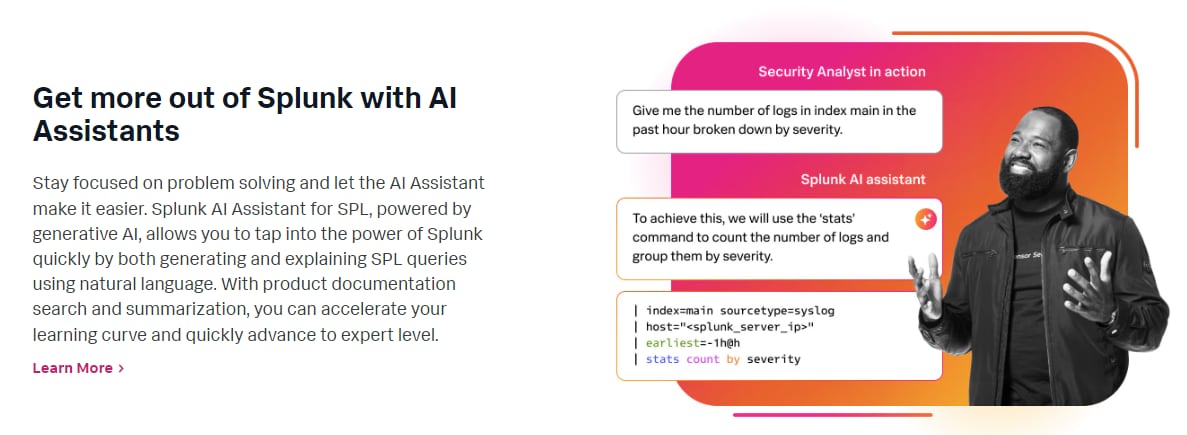AI Tools & Vendors for The Enterprise

AI tools support a variety of business activities that involve automation and data-driven decision making. The hype around AI is driven by consumer-facing products such as ChatGPT, but the reality is that AI has been a core component of enterprise IT technologies for some time now.
Dynamic resource allocation in public cloud data centers, ranking algorithms for search engines, forecasting algorithms for marketing and advertisements — these have all relied on state of the art machine learning algorithms and techniques at the time.
Today, the AI trend is prevalent as enterprise technology companies rebrand as an AI-first company.
So, here, let’s take a look at the AI technology market landscape by focusing on enterprise AI tools and vendors that comprise four core categories of AI today.
The AI Models Segment
A mathematical model, usually a deep learning model, serves as a foundation for AI tools. You can use these models to power your own automation and AI use cases, using the available AI models as the backbone foundation model and building your own automation services around it.
This involves fine-tuning these models using your own data in-house or interfacing your systems with the third-party AI model via an API.
The following AI tools and vendors are the key players in this category:
OpenAI offers a variety of AI models for conversational AI and multi-modal generative AI capabilities. You can integrate your services with the OpenAI model API and fine tune the models to meet specific use case requirements.
MistralAI offers open-source large AI models with conversational AI capabilities including strong fluency in coding. The open-source models are (relatively) smaller at 7 billion parameters (and above), as compared to the OpenAI GPT series that has several hundred billion parameters.
Commercial versions are optimized for high complexity tasks available via cloud partners operating the infrastructure environment end-to-end.
Hugging Face is a community-driven library of AI models, datasets, and AI applications. These models are built on the open-source versions of models published by Mistral, Meta, and NVIDIA.
Users can deploy and train these models on their own IT environments with performance and functionality comparable to commercial alternatives. Popular examples include Meta’s Llama 3 on Hugging Face.
Compute & Infrastructure
Cloud vendors offer purpose-built infrastructure environments to run large AI models. These are typically preconfigured, highly scalable and secure environments available on a subscription basis and delivered as private, public, and multi-cloud systems.
AWS, Google, and Microsoft are the key players in the industry offering end-to-end infrastructure pipeline and services to build, train and deploy ML models in the cloud.
NVIDIA is the most prominent player in this market segment offering a unified hardware-to-software platform optimized for machine learning. The most powerful AI models including OpenAI’s ChatGPT and Meta’s Llama 3 have been trained on NVIDIA’s flagship H100 chip.
NVIDIA has also launched the world’s most powerful AI chip, the B200 Blackwell GPU series that will be available directly and with cloud vendor collaborations such as AWS and Azure.
AI Services & Technology Consulting
While most organizations strongly believe that AI will transform their business, many lack the expertise necessary to build and run AI services in-house.
- Around 67% of the organizations intend to increase AI spending.
- More than half see data readiness as a top challenge.
This is where AI consulting can help fill the gap with domain expertise. Organizations including Accenture, IBM, Capgemini, PWC, and Deloitte are the leading providers of AI consulting. In addition to technical expertise in digital transformation project execution, customers also need consulting services in:
This is where deep industry knowledge and expertise allows business organizations to ensure responsible and trust-worthy AI execution, especially since AI models are trained on sensitive personal information and tend to exhibit biased output.
(Related reading: AI TRiSM, AI trust, risk and security management.)

AI Business Applications
You don’t always have to build your LLM-powered AI solution from scratch to operate as an AI-first organization.
Cutting-edge AI is a core component of engineering applications in business across the following key domains:
Process automation
Hyperautomation intelligence tools automate digital and physical operations. These range from activities in logistics and supply chain, to finance, legal, HR and IT service management (ITSM).
Hyperautomation intelligence is in fact replacing traditional Robotic Process Automation (RPA) that replaced manual processes with automation, by embedding intelligence and data-driven decision making into automation tools.
Cognitive insights
Tools that leverage AI to identify patterns in large volumes of information. These patterns are used to predict likely operational states and outcomes based on the present contextual information.
Examples include threat detection based on network traffic behavior.
Cognitive engagement
The consumer-facing technology where end-users are exposed directly to the AI models interface. This is usually in the form of conversational AI and has useful applications in ITSM, HR, Sales and Marketing, healthcare and more.
AI for enterprise technology
Let’s now summarize a list of AI tools for specific use cases in the enterprise technology market:
- Cybersecurity: Splunk and Splunk Enterprise Security
- Marketing: HubSpot, Zapier, Google Trends, Zoho Social, Outreach
- Development: OpenAI Codex, Amazon CodeWhisperer, GitHub Copilot
- Observability: Splunk Observability Cloud
- Productivity: ChatGPT, Claude, Gemini, Jasper, Midjourney, Dall.E
- Search: Perplexity, Google Search
- HR: Workday, IBM Watson Talent, Paradox, Workable
- Analytics: Google Analytics, Power BI, Qlik, Tableau, IBM Watson Analytics, AI frameworks and libraries based on PyTorch and Tensorflow.
- ITSM and customer service: ChatGPT (GPT-4o), BMC Helix ITSM, SolarWinds
See an error or have a suggestion? Please let us know by emailing splunkblogs@cisco.com.
This posting does not necessarily represent Splunk's position, strategies or opinion.
Related Articles
About Splunk
The world’s leading organizations rely on Splunk, a Cisco company, to continuously strengthen digital resilience with our unified security and observability platform, powered by industry-leading AI.
Our customers trust Splunk’s award-winning security and observability solutions to secure and improve the reliability of their complex digital environments, at any scale.




